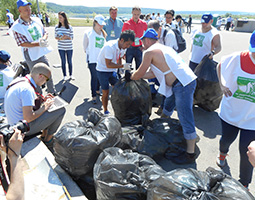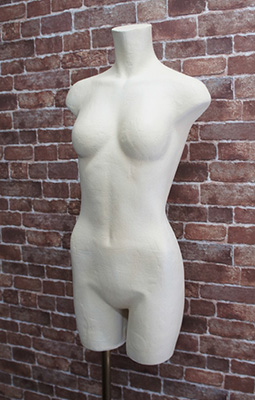Home > Highlighting JAPAN > Highlighting Japan June 2019 > Policy-Related News
Highlighting JAPAN


“Plastics Smart” Campaign
In recent years, marine pollution by plastic litter has become a serious issue. Japan is engaging in a variety of initiatives to deal with the problem.
Huge volumes of various kinds of plastic litter flow into the oceans around the world every day. If it continues at this pace, the weight of marine plastic litter is predicted to exceed the weight of fish by 2050. This litter affects things like the marine environment, ship navigation, tourism, fisheries, and living environments in coastal areas, but in recent years, there is particular concern about the effects of microscopic plastic litter with a size of 5 mm or less (microplastics) on ecosystems.
As such, the international community is working on initiatives to prevent the pollution of our oceans by plastic litter. The SDGs (Sustainable Development Goals) have “prevent and significantly reduce marine pollution of all kinds” by 2025 as a target of Goal 14, and measures to deal with the ocean waste are also discussed by the G7 and G20.
The Japanese government is also implementing a variety of measures to reduce plastic litter. One of these is the formulation of the Plastic Resource Recycling Strategy. The basic principles of this Strategy, which was formulated in May, 2019 ahead of the G20 Ministerial Meeting on Energy Transitions and Global Environment for Sustainable Growth (Karuizawa, Nagano) are promoting the 3Rs (reduce, reuse, recycle) for plastic as well as encouraging the use of recycled materials and bioplastics. In line with this, measures such as eradicating illegal dumping, curtailing the outflow of microplastics, and retrieving and disposing of ocean litter will be implemented to deal with marine plastic litter.
Moreover, the government is advancing the Plastics Smart campaign in collaboration with individuals, NGOs, companies, research institutes, and others. The campaign aims to spread across Japan initiatives such as surveying the reality of the marine plastic litter problem as well as eradicating littering and reducing the disposal of unnecessary single-use plastics. To do this, examples of various initiatives will be presented online and companies and organizations with an interest in the marine plastic litter issue will be encouraged to engage with each other in the Plastics Smart Forum.
Picking up Litter as a Sport
Social Sports Initiative organizes Spogomi, which incorporates elements of sports into litter picking so that you can have fun picking litter while also competing. In Spogomi, teams of three to five people have 60 minutes to pick litter while also separating it. Points are determined by weight and differ by type of litter, and the goal is to get the highest total score. Since it’s not about weight but points, everybody, young or old, has a chance of winning. The Spogomi tournaments started in 2008, hosted by local governments, companies, schools, and a variety of other groups and organizations. So far, about 90,000 people have taken part. More than 800 tournaments have been held, in Japan as well as Russia, Myanmar, South Korea, Hawaii, Panama, and other overseas locations.
Mass Producing “Wooden Straws”
Aqura Home, Co. Ltd. in Tokyo, a builder of wooden housing, has successfully mass produced wooden straws. They utilize technology that they have developed through wooden building to roll wood shaved down to a thickness of 0.15 mm into straws. Mass production of wooden straws using this method is a world-first. As material, they use trees that have fallen down because of natural disasters as well as timber from forest thinning and other domestic timber. During manufacturing, they can accommodate changes in length, thickness, and wood type. The grain appears slanted on the straws, creating a feeling of natural warmth. These wooden straws have been trialed at hotel restaurants in Tokyo since January 2019. They were also provided at the reception of the G20 Agriculture Minister’s Meeting held in Niigata in May.
Mannequins Made of Recycled Paper
In the past, mannequins, which are manufactured to wear and display clothes, were made of wax or paper, but since the 1960s, plastic has become the norm. Today, more than 100,000 mannequins are made in Japan every year, but they are disposed of as industrial waste after use. Amid this, Mode Kohgei Co. Ltd., a company which has manufactured mannequins for about sixty years in Fujimi City, Saitama Prefecture, has incorporated traditional methods for making daruma, dolls affectionately thought of as lucky charms in Japan since ancient times, to manufacture mannequins made of paper. They put about five layers of recycled paper in a mannequin mold, glue them together with rice glue, remove the paper from the mold after it has been dried, and complete the mannequin by finishing the surface with paint or cloth paste. With the growing interest in the plastic problem in recent years, their exceedingly rare paper mannequin is gathering attention and they are receiving more and more inquiries.
© 2009 Cabinet Office, Government of Japan








